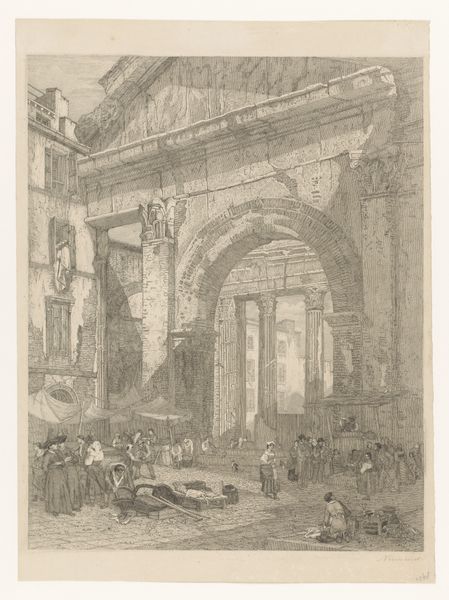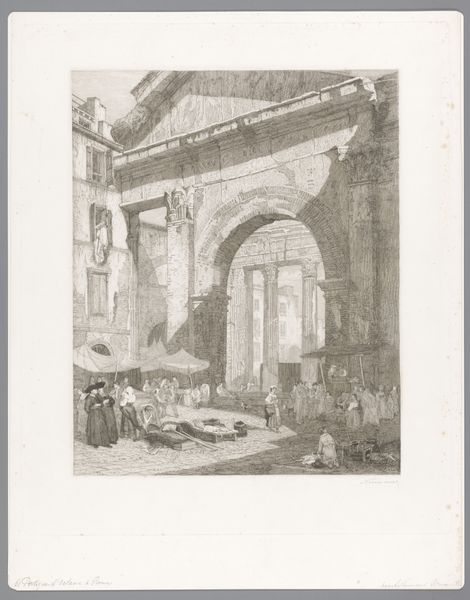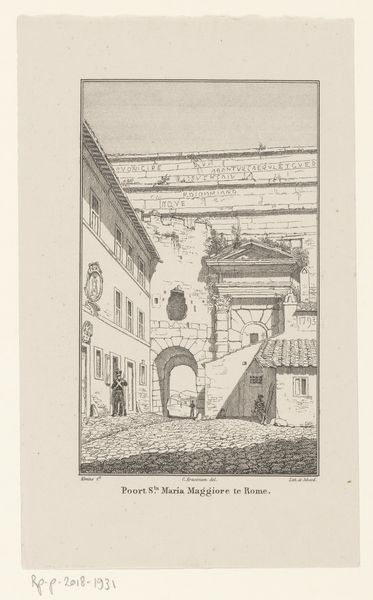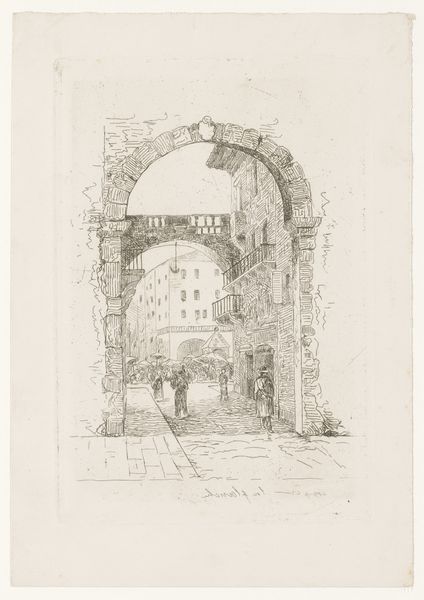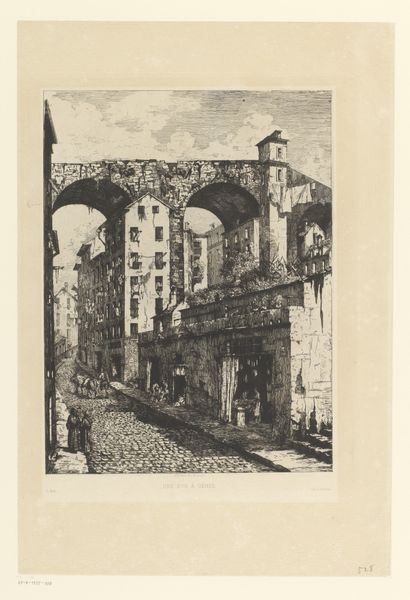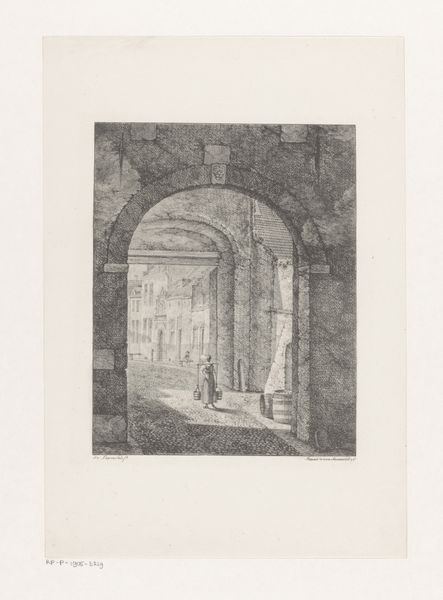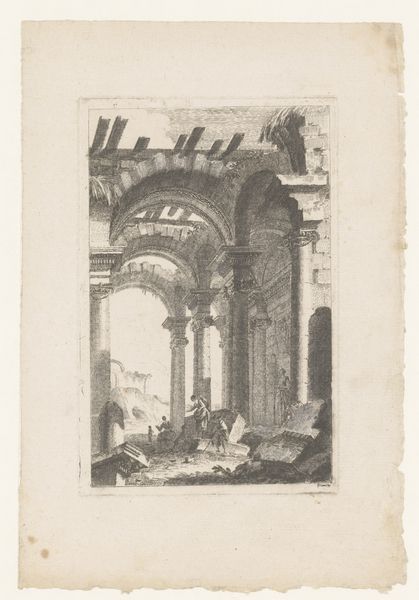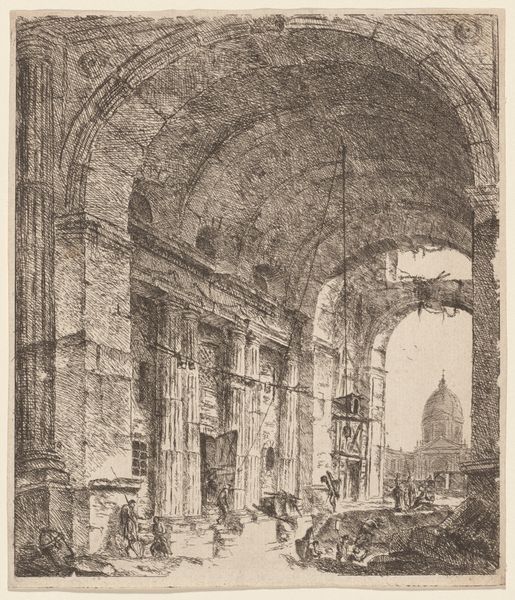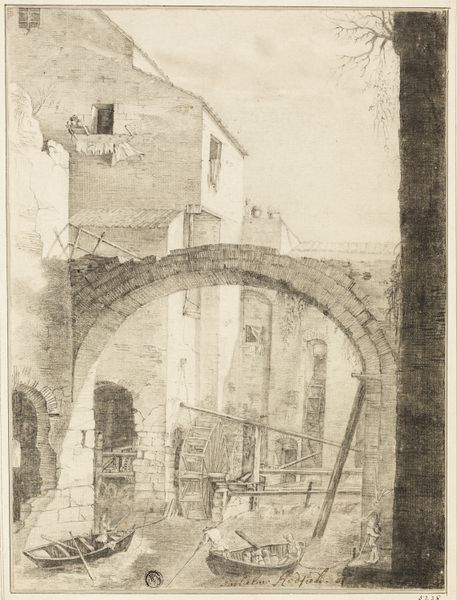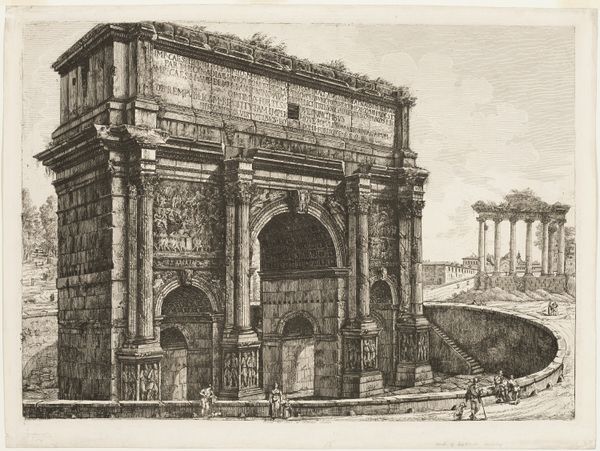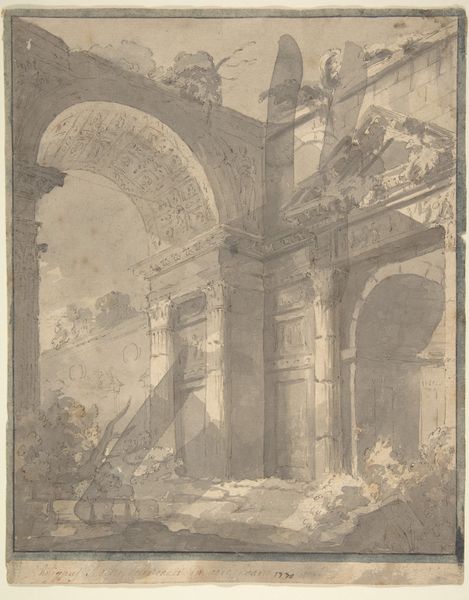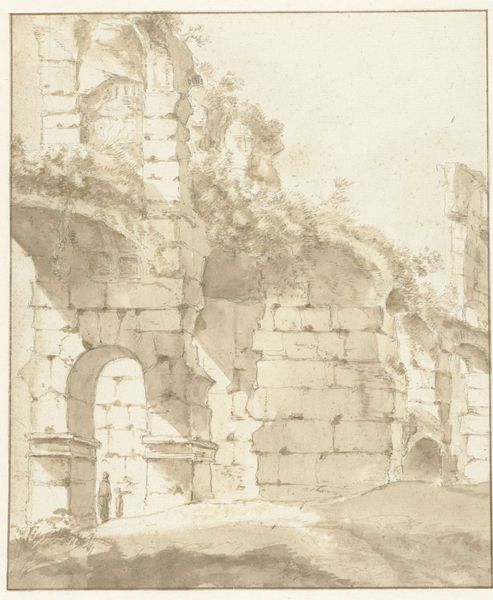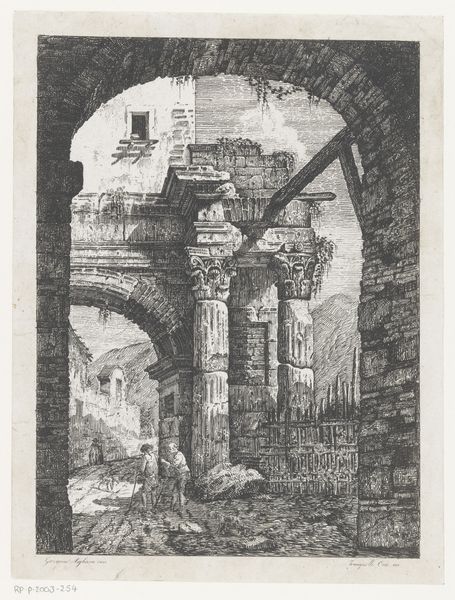
drawing, paper, ink
#
drawing
#
neoclacissism
#
landscape
#
perspective
#
paper
#
ink
#
cityscape
#
genre-painting
#
academic-art
#
watercolor
Dimensions: height 308 mm, width 231 mm
Copyright: Rijks Museum: Open Domain
Curator: Here we have Gasparo Galliari’s “Antieke bogen,” an ink and watercolor drawing on paper, likely created sometime between 1760 and 1818. What’s your initial read? Editor: I immediately feel transported—it's like stumbling upon an ancient Roman ruin during my morning stroll, a bit melancholic but also charming. There’s something ghostly and surreal about it. Curator: Ghostly is a great word for it. Galliari was, of course, deeply invested in Neoclassicism. Look at the precise architectural rendering, the meticulous detailing in the arches and distant buildings. You can really see his training in perspective. Editor: The perspective is incredible! The way the arches frame the cityscape beyond draws you in. I can almost hear the echoes of footsteps and whispered conversations, but where does all the drama end and where do I just admire his perfect execution? Curator: Well, I think the figures play into the feeling you described. Notice the small group in the foreground; they're almost dwarfed by the immensity of the architecture. It reminds me how temporary we all are and the buildings survive as witnesses to human passage. Editor: They do feel a bit like extras on a stage. The almost monochrome palette also contributes to this subdued feeling. What did Neoclassicism look like at this time? How else did they capture it? Curator: It’s the embrace of the “antique” world in style, structure and subject but applied in modern art forms of the era. But Galliari brings something to the canvas that moves away from tradition; even though everything about the composition is precise, rational, considered, Galliari creates something more theatrical here; a dramatic sense of atmosphere. Editor: The almost hazy quality, which contrasts against the strict geometric lines creates that special emotion, perhaps that’s the result of watercolor? Or an effect the artist deliberately sought, to convey a sense of decay and reverie? Curator: Perhaps, maybe his vision of Neoclassicism can’t deny the ever encroaching fog of reality or something like that. He wants us to imagine, he wants us to be present at the ruin but in our imaginations. Editor: Yes, and I appreciate the ambiguity he leaves for us to explore. It transcends pure architectural study. Curator: Absolutely. It becomes something far more personal and evocative. Thanks for this perspective!
Comments
No comments
Be the first to comment and join the conversation on the ultimate creative platform.
